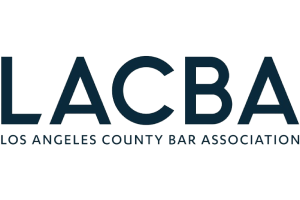- Free Consultation: (213) 800-7664 Tap Here to Call Us
Felony Sentencing Guidelines in California: A General Breakdown
California’s felony sentencing guidelines are established by the California Penal Code and the California Rules of Court.
- The California Penal Code (Section 1170) sets forth the basic framework for felony sentencing in the state, including the three strikes law, determinate sentencing, and alternative sentencing options such as drug treatment programs and community service.
- The California Rules of Court (Rule 4.408) provides more detailed information on the sentencing process, including the procedures for imposing and challenging a sentence, the calculation of good conduct credits, and the rules governing parole and probation.
Additionally, the California Department of Corrections and Rehabilitation (CDCR) provides guidance on the implementation of sentencing laws through various policies and regulations. Generally, felony sentencing guidelines in California are determined by several factors, including:
- the specific crime committed;
- the defendant’s criminal history; and
- any aggravating or mitigating circumstances.
These guidelines are designed to ensure that sentences are fair, consistent, and proportional to the severity of the crime committed.
One of the key factors in determining a felony sentence in California is the specific crime that was committed. California law divides crimes into three categories: misdemeanors, wobblers, and felonies. Misdemeanors are the least serious type of crime and are punishable by up to one year in county jail. Wobblers are crimes that can be charged as either a felony or a misdemeanor, depending on the circumstances of the case and the defendant’s criminal history. Felonies are the most serious type of crime and are punishable by imprisonment in state prison.
The California Penal Code also assigns each crime a “sentencing range,” which is the range of possible prison sentences for that crime. These sentencing ranges are determined by the severity of the crime, with more serious crimes having higher sentencing ranges. For example, a conviction for first-degree murder carries a minimum sentence of 25 years to life in prison, while a conviction for grand theft carries a sentencing range of 16 months, 2 years, or 3 years in state prison.
Another key factor in determining a felony sentence in California is the defendant’s criminal history. Under California law, prior convictions can result in increased sentences for repeat offenders. For example, if a defendant has one prior “strike” conviction pursuant to California Penal Code § 667(b) – (i), they will face a doubled sentence for their current crime. If a defendant has two or more “strike” prior convictions, they will face a sentence of 25 years to life in prison.
Additionally, California law also provides for “enhancements” to a sentence based on certain aggravating circumstances. These enhancements can increase the minimum and maximum sentences for a crime. For example, if a crime is committed with a firearm, the sentence can be enhanced by an additional 3, 4, or 10 years.
Lastly, there are also mitigating circumstances that can decrease the sentence. These include but not limited to, the defendant’s age, lack of prior criminal history, remorse and cooperation with the authorities, among others.
In summary, felony sentencing guidelines in California are determined by several factors, including the specific crime committed, the defendant’s criminal history, and any aggravating or mitigating circumstances. These guidelines are designed to ensure that sentences are fair, consistent, and proportional to the severity of the crime committed. It’s important for defendants to understand the specific laws and regulations related to sentencing, and to consult with an attorney to determine the best legal strategy for their case.
How a California Criminal Appeals and Post-Conviction Law Firm Can Help
Call today to consult with a Power Trial Lawyers, P.C. criminal appeals lawyer at 213-800-7664 or you can submit a contact submission.


















